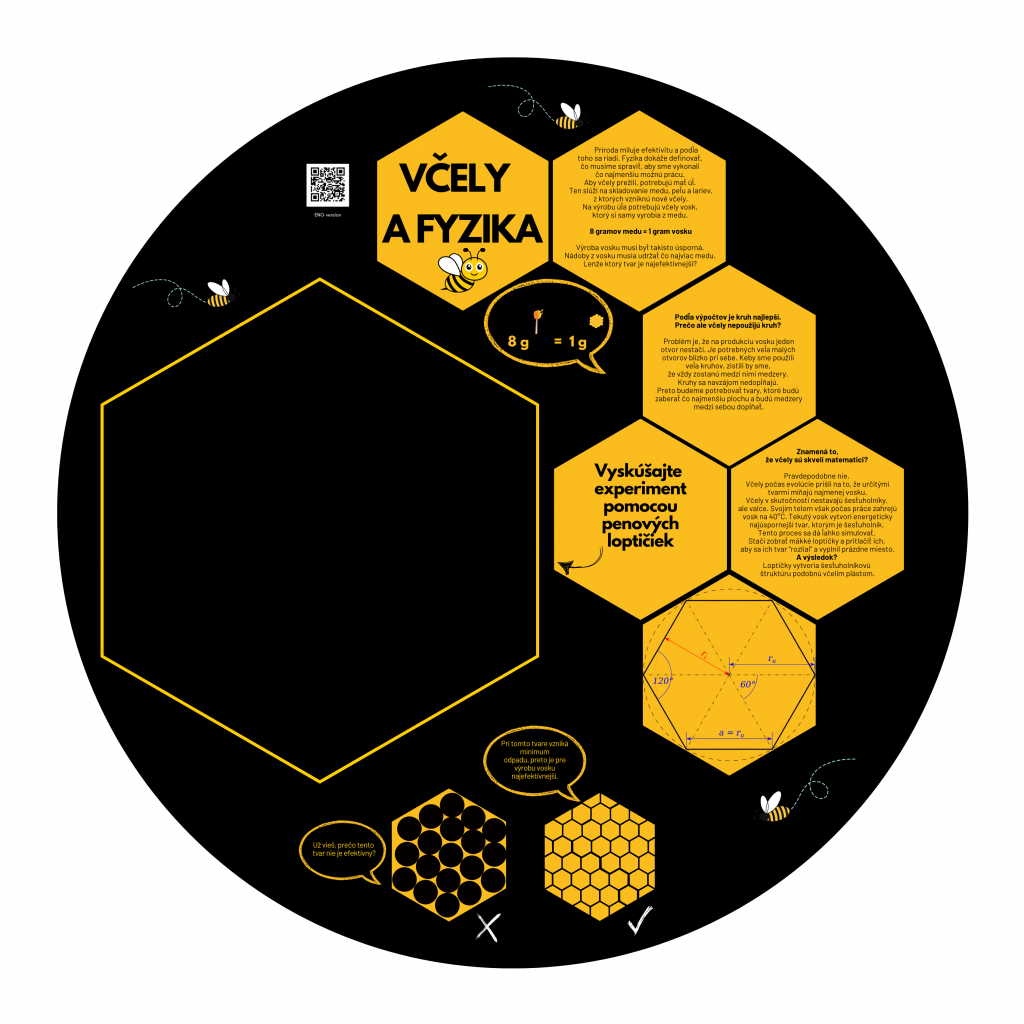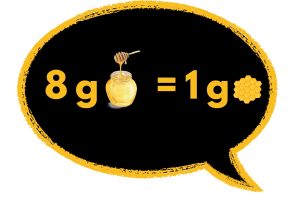Príroda miluje efektivitu a podľa toho sa riadi. Fyzika dokáže definovať, čo musíme spraviť, aby sme vykonali čo najmenšiu možnú prácu. Aby včely prežili, potrebujú mať úľ. Ten slúži na skladovanie medu, peľu a lariev, z ktorých vzniknú nové včely. Na výrobu úľa potrebujú včely vosk, ktorý si samy vyrobia z medu.
8 gramov medu = 1 gram vosku
Výroba vosku musí byť takisto úsporná. Nádoby z vosku musia udržať čo najviac medu. Lenže ktorý tvar je najefektívnejší?
Podľa výpočtov je kruh najlepší. Prečo ale včely nepoužijú kruh? Problém je, že na produkciu vosku jeden otvor nestačí. Je potrebných veľa malých otvorov blízko pri sebe. Keby sme použili veľa kruhov, zistili by sme, že vždy zostanú medzi nimi medzery. Kruhy sa navzájom nedopĺňajú. Preto budeme potrebovať tvary, ktoré budú zaberať čo najmenšiu plochu a budú medzery medzi sebou dopĺňať.
Znamená to, že včely sú skvelí matematici?
Pravdepodobne nie. Včely počas evolúcie prišli na to, že určitými tvarmi míňajú najmenej vosku. Včely v skutočnosti nestavajú šesťuholníky, ale valce. Svojím telom však počas práce zahrejú vosk na 40°C. Tekutý vosk vytvorí energeticky najúspornejší tvar, ktorým je šesťuholník. Tento proces sa dá ľahko simulovať.Stačí zobrať mäkké loptičky a pritlačiť ich, aby sa ich tvar “rozlial” a vyplnil prázdne miesto.
A výsledok?
Loptičky vytvoria šesťuholníkovú štruktúru podobnú včelím plástom. Pri tomto tvare vzniká minimum odpadu, preto je pre výrobu vosku najefektívnejší. Vyskúšajte experiment pomocou penových loptičiek

Bees and physics
Nature loves efficiency. The laws of physics determine the minimum work we have to do to achieve a certain goal. To survive, the bees need to build a beehive. It serves as honey and pollen storage and a home for the bees and larvae. To construct a beehive the bees need wax made out of honey.
8 grams of honey = 1 gram of wax

Wax production must be efficient as well. Wax honeycomb must store as much honey as possible. But which shape is the most efficient?
The math says it’s a circle. Why don’t the bees use it then?
The problem is that one cell is not enough to produce wax. The honeycomb consists of several small cells that are close together. Using a large number of circles would lead to huge gaps. Circles don’t fit together perfectly. That’s why the bees need shapes that fit together well, filling the gaps and covering the smallest space possible.
Does this mean that the bees are great mathematicians?
Probably not. During evolution, the bees figured out that by creating certain shapes in the honeycomb they spend the least amount of wax. In fact, the bees don’t build hexagons but cylinders. However, during the work, their bodies heat the wax to 40°C. The liquid wax creates the most energy efficient shape – a hexagon. This process can easily be simulated. All you have to do is take the sponge balls, put some pressure on them and observe how their shape “melts” and fills the empty surrounding space.
And the result? The balls create a hexagonal structure, similar to the honeycomb.
This shape generates minimal waste and that’s why it’s the most effective to produce wax. Try the experiment using sponge balls
